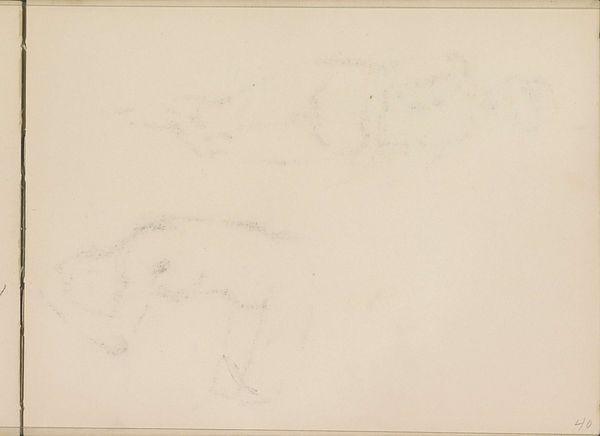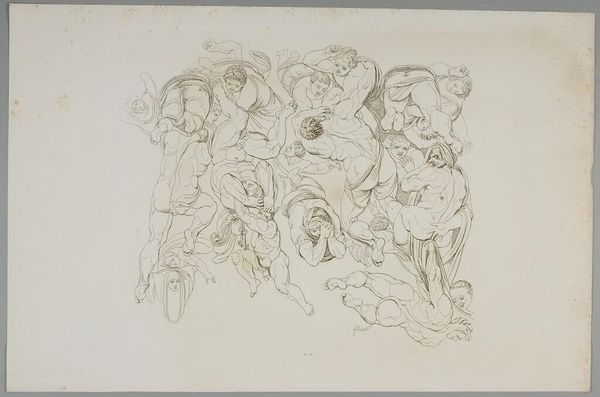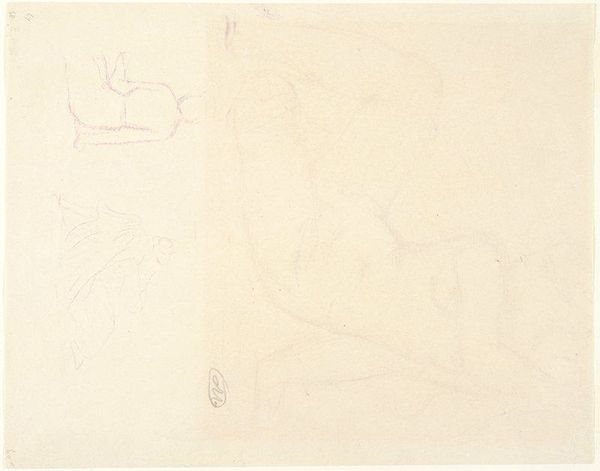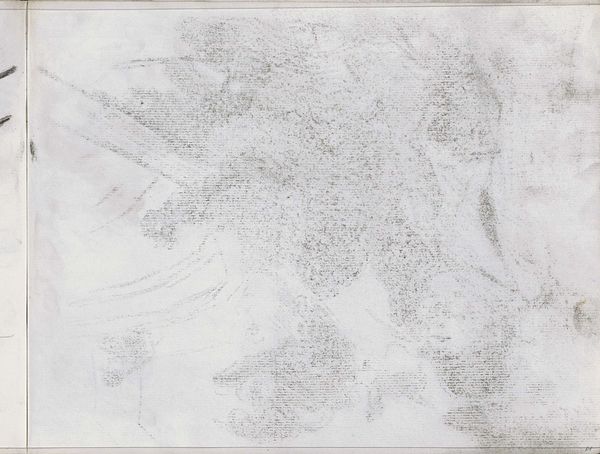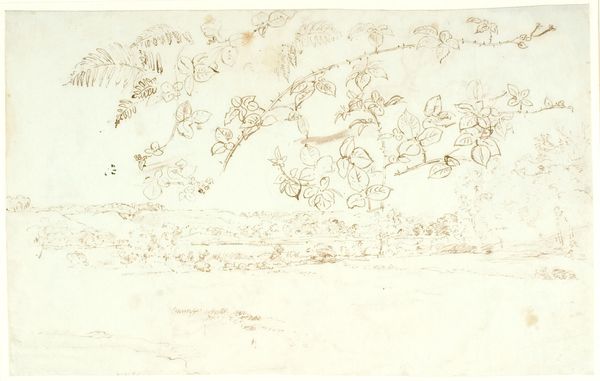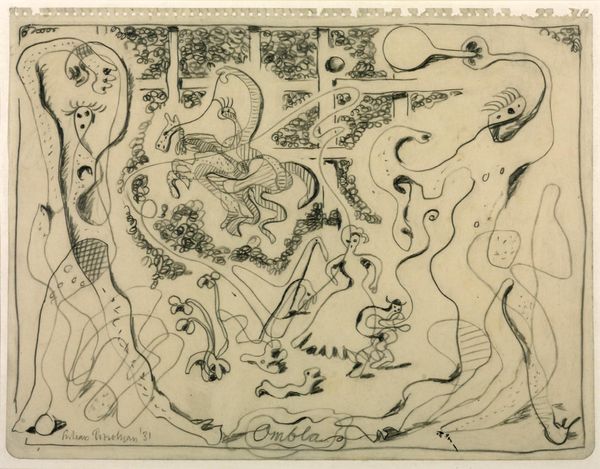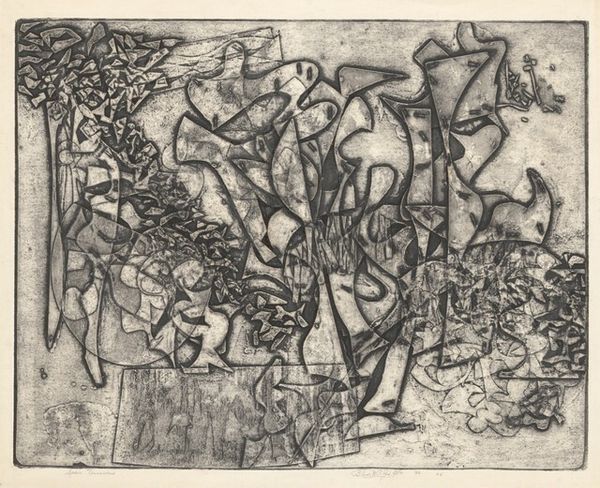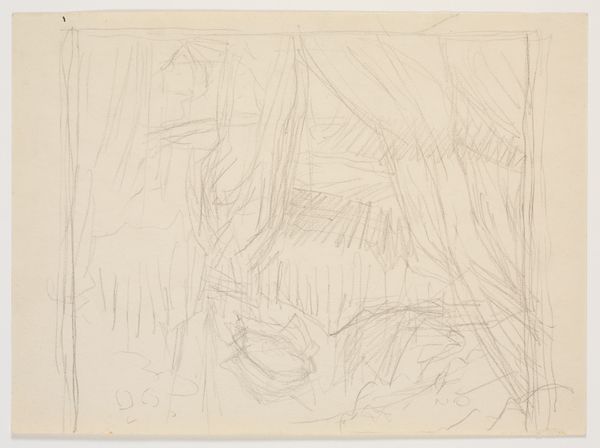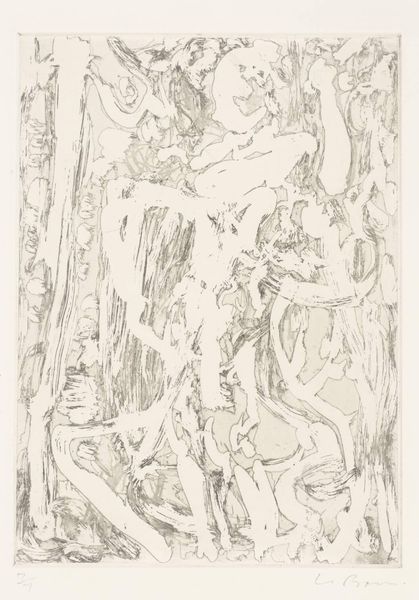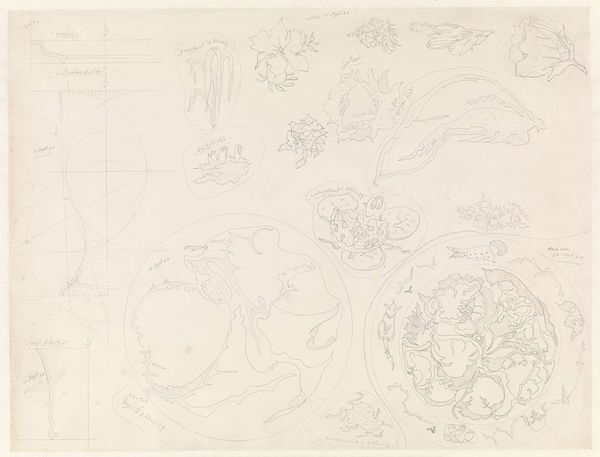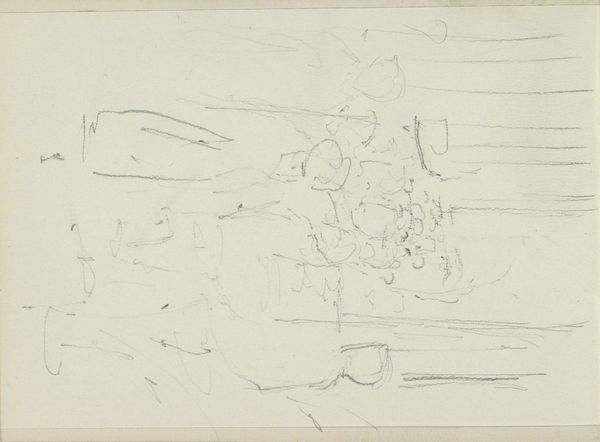
drawing, print, etching
#
drawing
#
cubism
#
ink drawing
# print
#
etching
#
figuration
#
abstraction
#
line
#
history-painting
Copyright: National Gallery of Art: CC0 1.0
Curator: This etching, called "Corrida. Wounded Torero" was created by Pablo Picasso in 1933. The image is rendered in delicate, almost hesitant lines. What do you make of it? Editor: Chaos, frankly. A frenzied energy. It's all motion, but with an overriding sense of morbidity. You can almost smell the blood. Curator: Well, the corrida, or bullfight, is a highly ritualized event, deeply embedded in Spanish culture. But Picasso, being Picasso, presents us with a distorted view. Think of it as social commentary disguised within the tropes of art. Editor: I see layers upon layers. The obvious images – the bull, the matador – they speak of courage and brutality. But look at the faces in the stands above the ring: repeated, almost demonic visages suggesting collective bloodlust and moral vacuity. Curator: It’s not just an expression of collective appetite; Picasso also reflects his personal conflicts. During this time, Picasso's relationship with his wife, Olga, was unraveling, while his affair with Marie-Thérèse Walter intensified. Editor: You're right. The bull, traditionally a symbol of virility and power, here seems diminished, almost pathetic. And the horse rearing? Is that the death of one part of him and life springing up, or the turmoil this love triangle brought to those involved? It looks more like an intellectual puzzle. Curator: Perhaps that reflects Picasso's Cubist leanings—multiple perspectives offered simultaneously. Consider it then not just as an arena, but a stage for personal drama playing out through the symbolism of a highly theatrical spectacle. Editor: Well put. It transcends simple reportage. The lines themselves, spare and raw, feel almost like exposed nerves. This is not a celebration; it's an interrogation. The title, "Wounded Torero" may point to those watching also experiencing harm and deep loss. Curator: Precisely. It’s a multifaceted exploration of pain, desire, and the spectacle of violence – elements constantly negotiated within Picasso’s work, and reflecting turbulent changes within European societies during that volatile interwar period. Editor: Looking again with all this in mind I'm struck by the visual echo here of so many deep-seated drives of humanity laid bare. Almost feels timeless and horrific and true. Curator: I agree. Its enduring power lies in its ability to provoke, disturb, and demand introspection about our role in the dramas unfolding both within and around us.
Comments
No comments
Be the first to comment and join the conversation on the ultimate creative platform.
